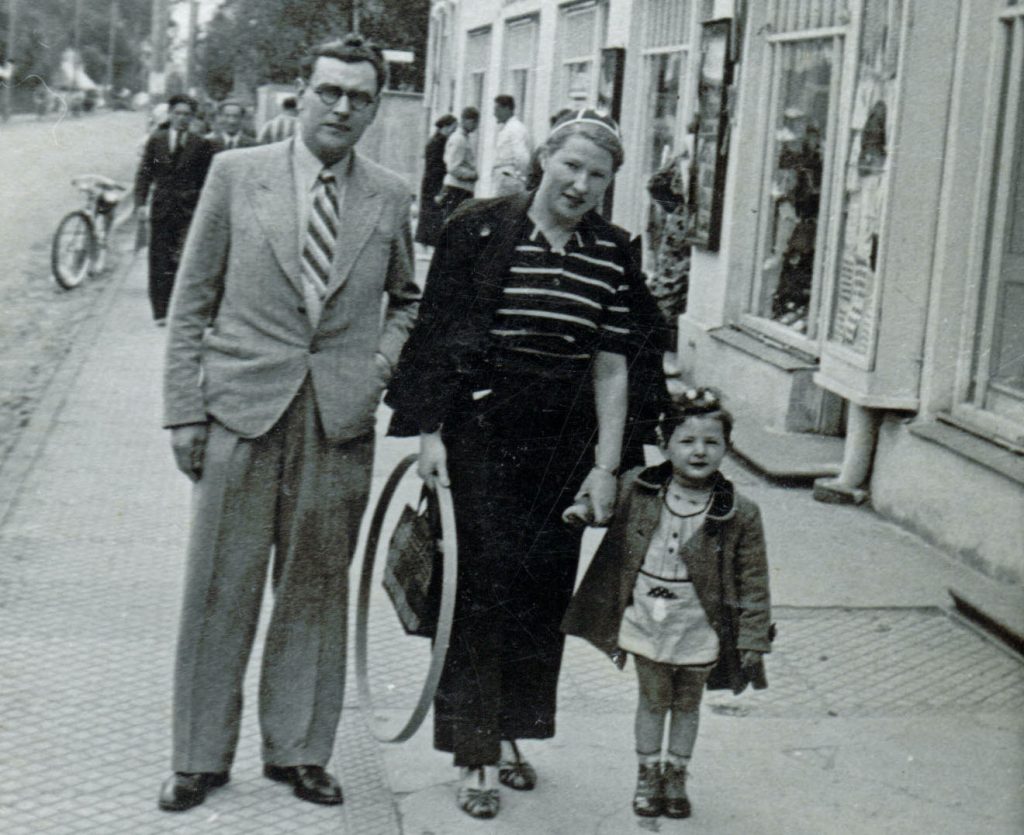The chilling yet inspiring story of one brave family’s escape from Nazi evil
By Keith Morgan
Ruta’s Closet is the true story of how a Lithuanian Jewish family sought to escape the deadly clutches of Hitler’s Final Solution.
The Ruta’s Closet project traces its origins back to 1997 when I wrote a column about the late Ruth Kron Sigal, in Vancouver’s Province newspaper.
She was a survivor of the wartime ghetto of Shavl, in Lithuania. And in my long newspaper career I’d covered many chilling true life crimes but this story about the Holocaust was the most remarkable I had heard.
Moved by the story
I was inspired by the story of how the determination of Ruth’s parents Meyer and Gita Kron to survive grew stronger with every setback. They became increasingly resourceful as family members and good friends perished at the hands of the Nazis and marauding armed collaborators.
A series of narrow escapes in their hometown of Shavl – Siauliai in the Lithuanian language – and threats of betrayal by formerly friendly non-Jewish neighbours failed to extinguish the family’s spirit.
It takes place in a small Baltic country that even today wrestles with its collective conscience. It does so NOT because so many of its population stood by and watched their Jewish neighbours perish but because too many among them played a murderous role in the annihilation of more than 200,000 Jews – 96 percent of the pre-war Jewish population.
Lithuania today
Today’s Lithuanians are reminded constantly about the complicity of many of their forebears. The blood of murdered Jews, who lie in shallow mass graves on the edge of town, stain virtually every community. Simple memorial stones are all that reveal the approximate numbers of Jews buried there.
Ruta’s Closet explores the dark side but it also celebrates the few who risked their lives to save their Jewish brethren. Outside the high barbed wire fence of each ghetto, there were Catholic priests, who practiced what they preached. They ignored the entreaties of the church hierarchy not to become involved in rescuing Jews. They also decried brother priests who played an active role in the wholesale murder of the Jews.
Focus on the Righteous
The righteous clergy members were aided by members of their mainly rural flocks, whose faith moved them to save Jewish lives. It is only the selflessness and bravery of such ordinary folks that have made it possible today to share the Krons’ inspirational story of the triumph of good over the jackbooted evil that rampaged through the Baltic lands in the 1940s.
The Krons’ neighbors
While the book focuses on the Krons and their extended family, it also tells of others who touched their lives and offers detailed descriptions of important events in the ghetto.
It tells remarkable stories about the secret saving of a feared SS officer’s life by a Jewish doctor, a body swap that saved a young Jewish life, details an inhuman Nazi ban on births, the gassing of a town’s children en masse and offers eyewitness accounts of chilling mass executions.

The cold, hard details
No apology is offered for recording such events in detail. People need to know and remember what went on back then and what can happen again.
The manuscript was written in a fictional style to make it more accessible to all, based on family diaries and other documentation. The conversations and event reconstructions derive largely from memoirs and survivor interviews. Where no accounts of conversations exist, the authors created them in keeping with the nature of the occasion and in line with the personalities of the subjects and how they typically spoke at the time.
An important lesson
In conclusion, Ruta’s Closet is not an academic treatise or strict documentary but it is an honest attempt to share the experiences of one family and tell the broader story of the Shavl ghetto and the tragedy of the Holocaust in Lithuania.
Ruta’s Closet is a lesson from yesterday, to be learned today and remembered tomorrow.
